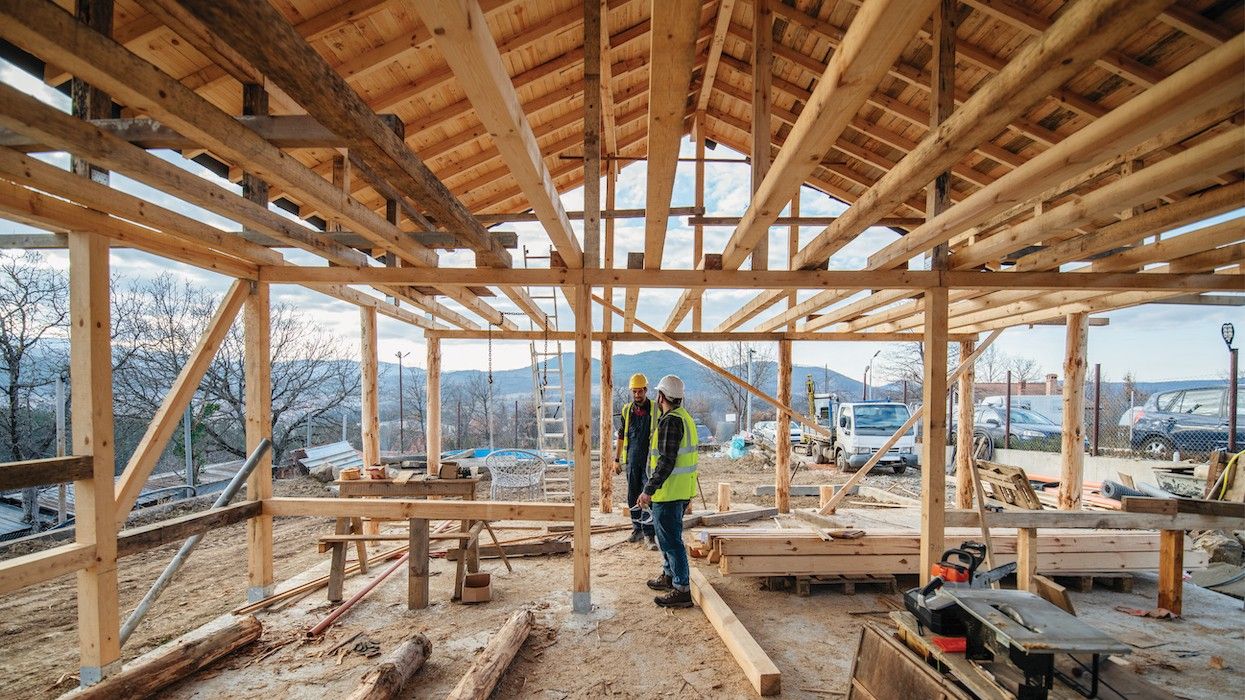This article was submitted by Tim Hudak, CEO of the Ontario Real Estate Association.
In the face of Canada’s housing affordability crisis, we are in desperate need of housing supply. Factory-built homes, also known as modular construction, are emerging as a key part of the solution.
Most consumer goods, like cars and appliances, are built in factories using standardized blueprints – this allows for fast, quality-controlled production. Homebuilding has traditionally been an exception to this method, but modular construction is changing that.
With modular construction, sections of a home are built in factories and then transported to a construction site for assembly. Components such as wiring and plumbing are integrated afterwards. The final home or apartment building looks like any other building in the neighbourhood, but it can be built much quicker.
In a factory, production doesn’t stop for the winter season. Multiple floors of a building can be built simultaneously and assembled later, instead of waiting to finish one floor before starting the next. That’s why it can take as little as one to two weeks to complete factory work for modules, with only 20% of the work remaining for on-site assembly. Overall, the time to build a home can be reduced by 30-60%.
Modular construction is also environmentally friendly, reducing waste during the manufacturing process and satisfying energy efficiency standards – including net-zero. It can also be built to meet accessibility standards, which is essential for Ontario’s aging population and people with disabilities.
Every party at every level of government emphasizes that Canada needs to build more housing quickly and has recognized the potential of factory-built homes. The federal government introduced the Rapid Housing Initiative with “quickly develop[ing] new modular multi-unit rentals” as a top priority. The City of Toronto launched a Modular Housing Initiative, in collaboration with the Canada Mortgage and Housing Corporation, which already completed several developments. Premier Ford declared that Ontario will “exhaust every avenue in looking at modular homes,” and appointed Associate Minister of Housing, Rob Flack, with the responsibility to develop modular housing.
Despite all this commitment, big barriers remain. Like every province, Ontario has complex laws and regulations impacting housing, from planning and zoning, to building codes and inspections. Most rules were written without any thought of modular construction. The result is at best, confusion, and at worst, burdensome red tape.
For example, factory-built homes are generally indistinguishable from traditionally built homes, but some bylaw officers have wrongly treated them as mobile homes subject to special zoning requirements. In 2003, the Canadian Standards Association (CSA) created rigorous standards for the quality and safety of modular construction so that these could be adopted nationwide. But Ontario’s Building Code does not consistently reflect those standards, so builders who comply with them cannot be sure whether their buildings will be approved and may even get different answers in different municipalities.
Slow approval for modular construction was not a result anyone intended. Just as other factory-built items can be approved up-front, with only brief inspection needed for the final product, factory-built homes that comply with standards should get quick and easy approval. But until the rules are updated and clarified, desperately needed new homes will continue to be delayed.
Fortunately, Ontario has the power to make changes that would significantly boost modular construction. These include:
- Amending municipal zoning bylaws and educating staff, to avoid conflating factory-built homes that stay permanently on a property with mobile homes.
- Developing blueprints for modular communities to reduce time for architectural design coordination and approvals.
- Incorporating all CSA standards into the Building Code.
- Amending the Truck Transportation Act to exempt factory-built homes from temporary transportation weight limits. In the spring, municipalities often reduce the weight that trucks can carry on the road to ensure that melting snow doesn’t deteriorate the cement. Unlike traditional construction, where trucks carry heavy materials to the job site multiple times, modules are transported to the site only once before assembly begins.
- Reforming the Ontario Land Tribunal, as recommended by the Housing Affordability Task Force, to ensure that ‘NIMBY’ opponents cannot restrict development.
Modular construction offers the opportunity to build more homes faster. With the right processes and legislation, we can scale the industry and get more families into affordable new homes. The Ford government has rightly made factory-built homes a priority, and a few bold actions can have a major impact on getting it done.





















